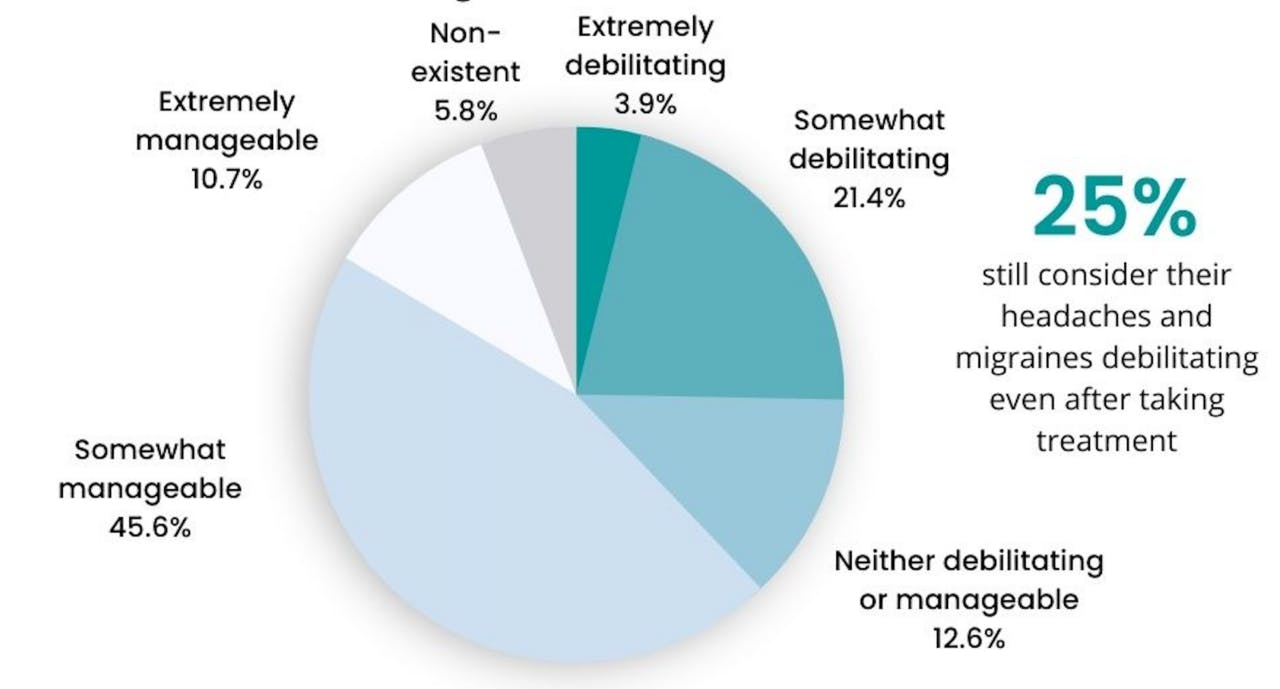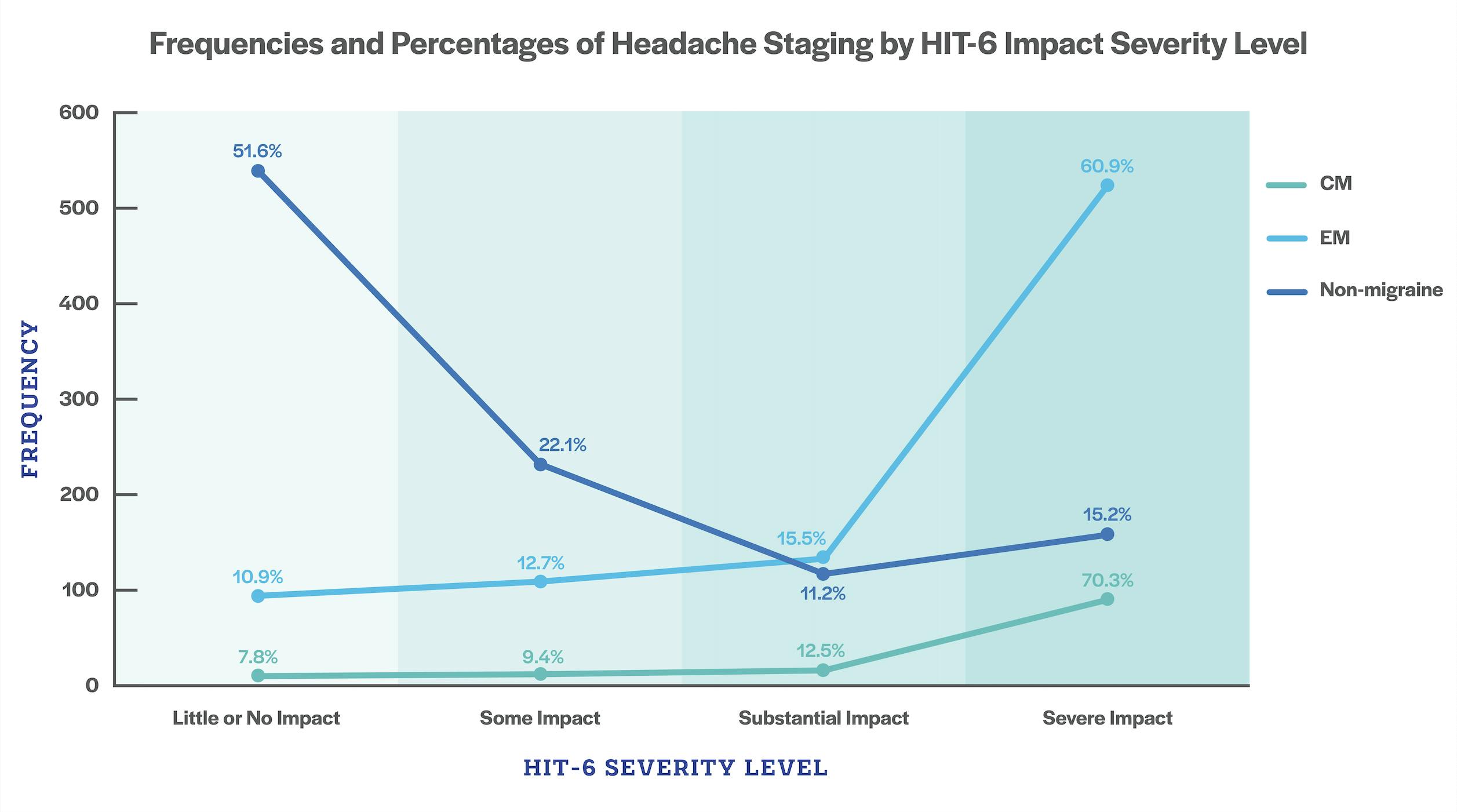Headaches and migraines do more than just hurt your head. They can severely impair patients’ ability to work and live in peace. For example, 23% of people with chronic migraines decrease their work hours, and 78% report that headaches adversely affect their children’s activities.1 As one of the most prevalent and disabling conditions worldwide, there’s no room to normalize these conditions or accept associated stigmas in the process.2 Migraines and headaches are neurological illnesses—studies and treatments should be aligned with their severity.
What Is a Headache Impact Test?
The six-item Headache Impact Test (HIT-6) from QualityMetric is a patient-reported outcome (PRO) tool used to capture the impact of headaches and headache treatments on functional health and well-being. The HIT-6 addresses six core domains affected by headaches:
- Pain: The severity and frequency of headache pain
- Social Functioning: The impact of headaches on social relationships
- Role Functioning: The impact of headaches on home and work responsibilities
- Cognitive Functioning: The impact of headaches on the ability to concentrate and multitask
- Vitality: The impact of headaches on energy levels
- Psychological Stress: The impact of headaches on mental health and mood
What Is the Headache Impact Test Used For?
The HIT-6 is extremely useful for screening and monitoring how headaches affect patients in their day-to-day lives. The means and standard deviations of HIT-6 scores help discriminate headache impact across chronic migraines (CM) and episodic migraines (EM) as well as non-migraine headaches. HIT-6 score interpretation uncovers pain levels, functional limitations, general tiredness and irritation and mood swings.
The table below shows the correlation between severity and non-migraine, episodic migraine and chronic migraine patients.
Healthcare professionals employing the HIT-6 can more easily monitor the everyday effects of headaches, identify appropriate care measures, track the trajectory of headache impact and determine the effectiveness of various headache treatments. They become equipped to better understand each individual, making personal and data-driven treatment decisions that have the potential to improve patient conditions.
The impact of migraine headaches cause significant emotional burden, increased fatigue, disruption in cognitive functioning and disability in performing daily role activities. Mark Kosinski, Chief Commercial Science Officer at QualityMetric, says this suggests that “either individuals are not benefitting from their current migraine therapy and need a change in the approach to treating their migraine or these individuals are not adhering properly to their current therapy.”
Data from the headache impact test is particularly vital for patients who have been underdiagnosed and undertreated for debilitating headaches in the past. Real-life patient stories are transformed into functional datasets for researchers and scientists to involve in systematic review and critical analysis to support research, non-pharmacological interventions and other treatments for migraines.
Interpreting HIT-6 Scores
Interpreting Headache Impact Test scores is achieve through a simple summary of the six items in the survey, ranging from 36 to 78 with larger scores reflecting greater impact. Levels of headache impact severity can be categorized using score ranges based on the HIT-6 interpretation guide into one of four areas: little or no impact (49 or less), some impact (50–55), substantial impact (56–59), and severe impact (60–78).
Request a Headache Impact Test (HIT-6) Survey License
To make the most of these headache impact tests, consider working with QualityMetric to screen for migraines, determine the severity of headache points and make norm-based interpretations. QualityMetric offers all survey licensees standardized scoring services and technologies as well as translation and interpretation guidance for the future of migraine diagnosis and management.
HIT-6 by the Numbers:
- Completion time: 1-2 minutes
- Administered to: Adults aged 18 and older with frequent headaches
- Recall period: 4-week
- Translations: 172
Request a HIT-6 Survey License
To make the most of these headache impact tests, consider working with QualityMetric to screen for migraines, determine the severity of headache points and make norm-based interpretations. QualityMetric offers all survey licensees standardized scoring services and technologies as well as translation and interpretation guidance for the future of migraine diagnosis and management.
Request a license for the Headache Impact Test (HIT) to learn more about meaningful scoring and survey applications for patients with tension headaches and migraines in your research or clinical practice.
References
- Progress in Mind Middle East. How does chronic migraine affect everyday life? Insights from the Chronic Migraine Epidemiology and Outcomes (CaMEO) study. Progress in Mind. Published April 20, 2021. https://mea.progress.im/en/content/how-does-chronic-migraine-affect-everyday-life
- Stovner, L.J., Hagen, K., Linde, M. et al.The global prevalence of headache: an update, with analysis of the influences of methodological factors on prevalence estimates. J Headache Pain 23, 34 (2022). https://doi.org/10.1186/s10194-022-01402-2
 NEW COAS IN ONCOLOGY GUIDE
NEW COAS IN ONCOLOGY GUIDE


